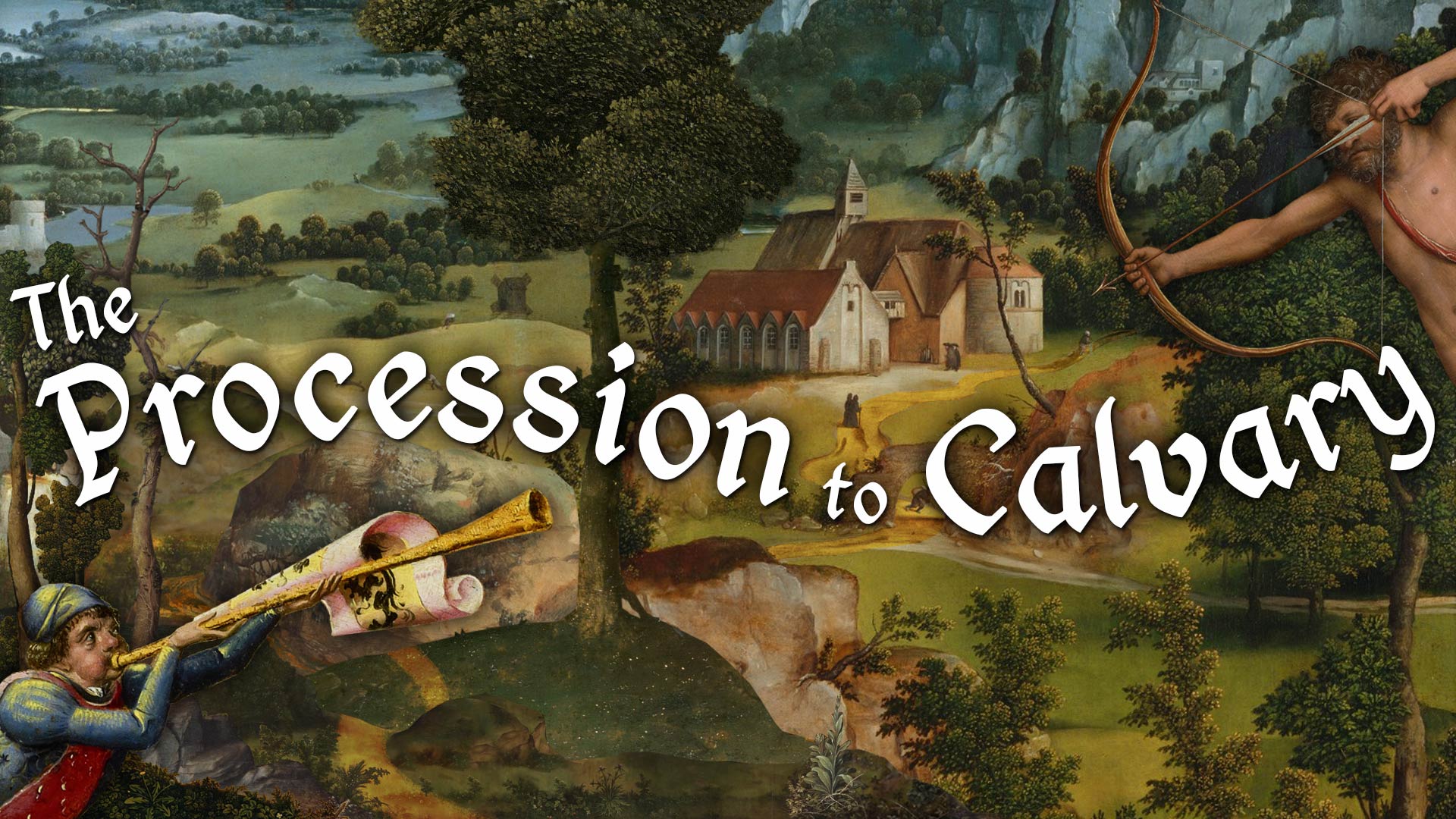Well, I’m a bit late to The Procession to Calvary party.
I mean, I was here, nice and early, on day one, playing Procession to Calvary on its Xbox Game Pass release day. It was excellent, and I highly recommended it but passed on a review as I was crazy busy. Then December came, and I was even more busy drawing commissions for Christmas cash. January rolled on, and I got super ill, too sick to sit at my computer.
It was during this sickness that James Stephanie Sterling reviewed Procession to Cavalry. Now I’m ready to write this, my fellow journos are like: “Oh, you discover that after Sterling?”
Grumble grumble. Let this be a warning to you; pounce on an opportunity, or Stephanie will put it in her heaving toy chest. And then chokeslam me because I’m a tiny baby boy a-goo goo gaga.
Anyway. Procession to Calvary. The second “Renaissance Masterpiece” game from Joe Richardson, the sequel to 2016’s Four Last Things.
In Four Last Things, you were an unnamed peasant seeking redemption for your sins after a particularly nasty dream about the garden of Eden. Unfortunately, due to a loophole, Heavenly Peter can only absolve sins committed in the current demesne. So you went on a hilarious quest to commit all seven sins in the local vicinity. Once you had, you are condemned to jump off a tower for your sins.
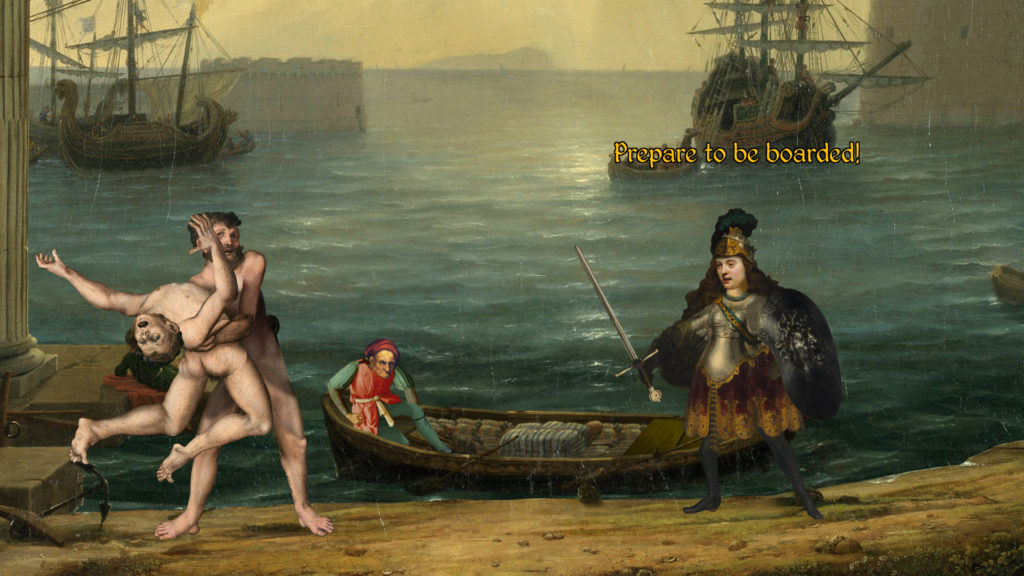
Procession to Calvary picks up immediately after. The peasant, now known as Immortal John, has survived his fall as commoners rally to this new Messiah, Heavenly Peter has fled South. You, a lady knight with a taste for indiscriminate killing, finds that now the war is over, murder has been made illegal by Immortal John. But perhaps he would approve of Heavenly Peter’s death? Thus you embark on a bow-legged, arm-waving adventure to rid the world of the monstrous Heavenly Peter because he’s the only person you are allowed to kill.
Four Last Things was a short, easy point and click adventure that takes about an hour or so to complete. Procession To Calvary takes about three hours to get through and has different endings. It’s longer, smoother, more challenging, and funnier thanks to fourth-wall-breaking jokes about the difficulties of animation in Macromedia Dreamweaver, a redundant program I learned to use back in the Dark Ages.
It being funnier is a massive achievement, because these games are hilarious.
There are three areas Richardson’s games not only excel, but intertwine to become the pie-poisoning, Satan-pleasing, skunk-befriending genius – music, art, and humour.
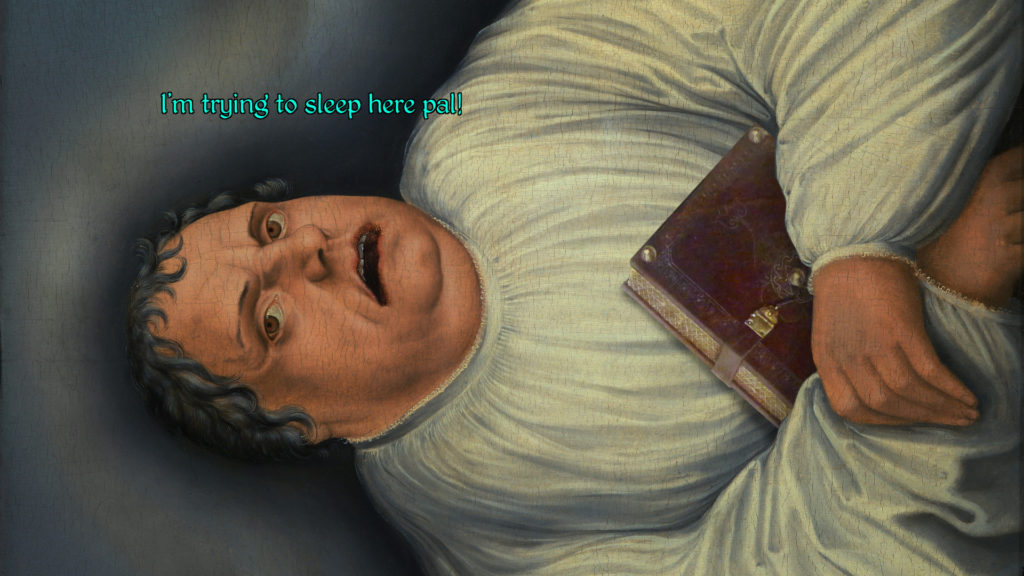
The music is all public domain classical pieces, stuff you’ll recognize. Soussa (the Monty Python Theme Guy), Bach, Satie, Vivaldi, Wagner, Scarlatti. It’s all very fitting for the Renaissance setting and played by delightful onscreen musicians (and if you want to clap or sing along with the music, you can. (Tooty, toot toot toot!). The sound effects are sparse but effectively used, limited to your clanky walking, sword swings, and bodily functions.
The art is similarly public sourced, and probably the first thing you’ll notice or know about this game. Every visual asset is taken from famous paintings, often cobbled together to create new characters and set pieces. From the backgrounds taken from the works of Hieronymous Bosch and his students to Vermeer’s iconic Girl with A Pearl Earring, and even your playable character – a hilariously composited and limb-wiggling version of Belona by Rembrandt. What this results in is a unique visual style of mismatched, yet visually intertwining, characters, objects, and settings, all lovingly animated with custom expressions and movements – after all, the original resources were all static. The mix of hand-painted art emptied from the world’s greatest museums, bold colours chosen by a few dozen dead Europeans with funny facial hair, and recognizable music that your grandparents love conjures a truly unique gaming experience.
Well, almost unique, not counting Four Last Things, and the obvious.
Procession to Calvary is like playing a game made of Monty Python animations.
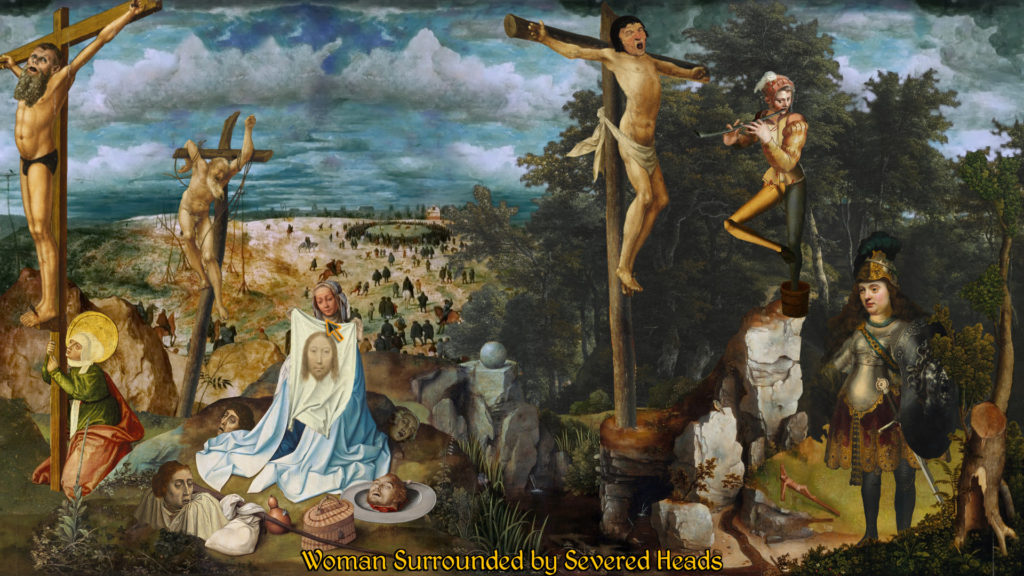
This is no snub. Terry Gilliams’ unsettling yet side-splitting cartoons are a medium otherwise limited to purely visual media and turning that style of comedy into an interactive experience (complete with Soussa music, which is coincidentally blaring at me right now) is pure, unadulterated, genius.
The closest that has come to it were those mid-90s Monty Python Point and Clicks by 7th Level, like Complete Waste Of Time and Holy Grail. They were bad, bad games, but they were great experiences
combining the music and visual flair that tied it together with fitting sound effects and animations. That’s one of Procession’s many strengths, if just for Belona’s funny clanking run and the visceral screams when you stab a fool.
I love the aforementioned in-universe musicians and their silly animations, from the guy jumping across the rocks at the crucifixions playing Beethoven, to the cat choir’s lovely stretched mouthes in the Satan cave.
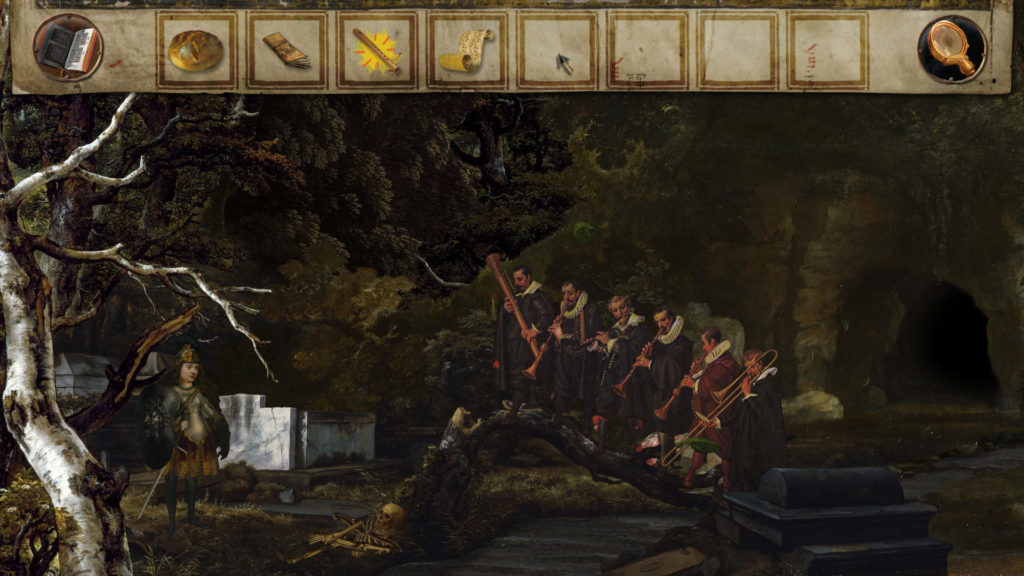
Another final Python comparison is the humour which is easily the best I’ve encountered in a game.
Sorry Psychonauts 2 and The Artful Escape, but you cant compare the combination of highbrow artistic references, fart jokes, dumb graphic violence, snide attacks at the limitations of outdated animation tools, and just straight-up great wit. From the terrible street magician, you help escape from crucifixion and a boulder-sealed cave (Spoilers: It’s Jesus), Satan’s sniggering bumhole, to the town gatekeeper’s obsession with his Giant key, its all belly-slapping stuff.
Procession to Calvary is a great, memorable, visual, and audibly stunning few hours of your time. Just be sure to save once you finally fight your way to Heavenly Peter so that you can try both proper endings.
Then load it up again and kill some people. Yay! Shunk!
Step on me, Stephanie!

